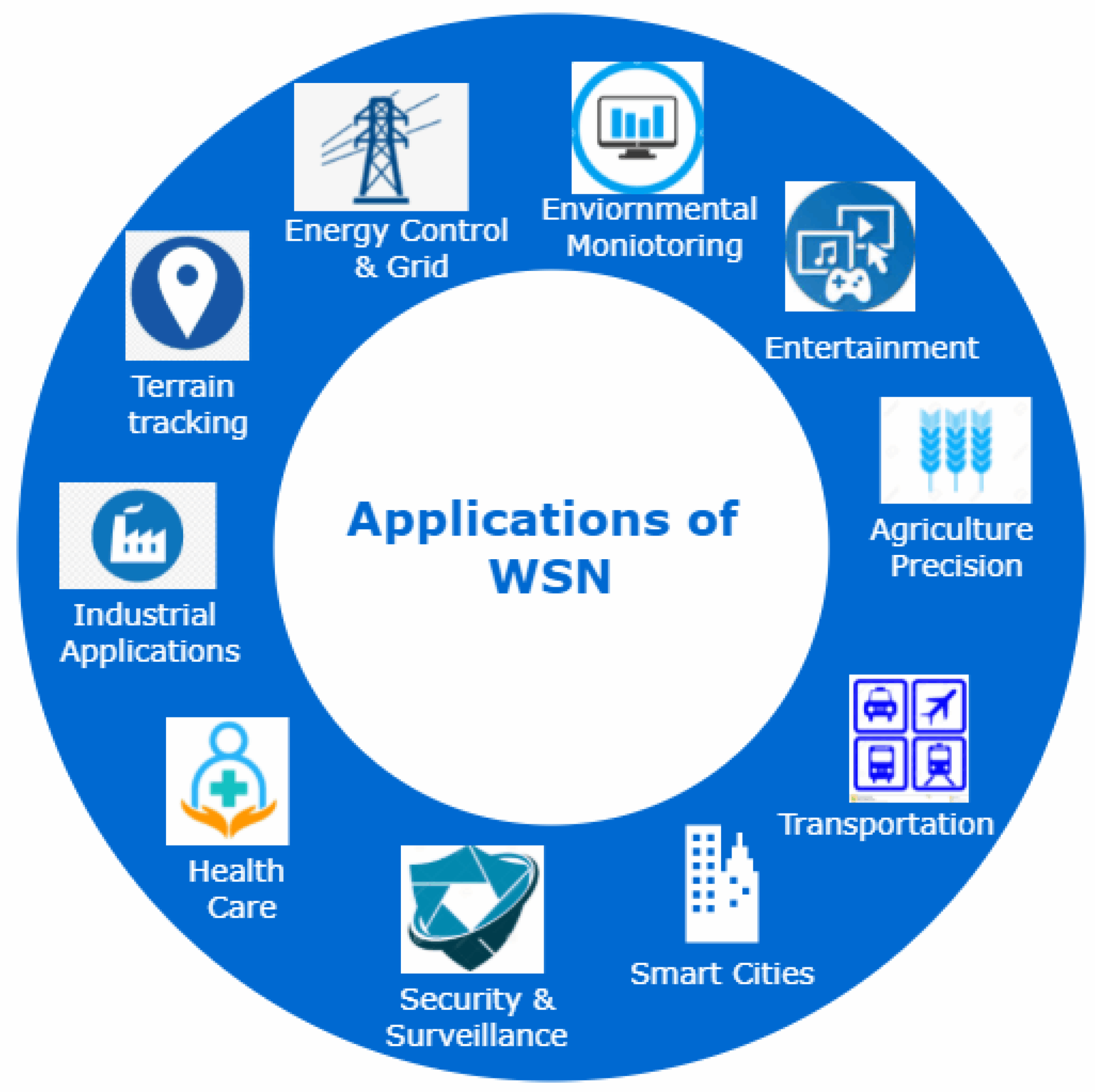Exploring Ambient Wireless Tags and Sensors The Future of Connectivity
Ambient wireless tags and sensors represent a groundbreaking shift in how devices communicate and operate without direct power sources. Leveraging ambient backscatter and IoT technologies, these innovations enable seamless data transmission across vast networks, from smart cities to supply chains. This article delves into the mechanics, applications, and future potential of ambient wireless technologies, offering a comprehensive overview of their transformative impact.
Understanding Ambient Wireless Technologies
Ambient wireless tags and sensors represent a paradigm shift in IoT connectivity by eliminating the need for traditional power sources like batteries or wired connections. These devices operate by harnessing ambient radio frequency (RF) signals—such as Wi-Fi, cellular, or broadcast transmissions—to both power themselves and communicate data. Unlike conventional IoT sensors, which rely on active transmitters and dedicated power supplies, ambient wireless devices leverage ambient backscatter to reflect and modulate existing RF waves, enabling ultra-low-energy operation.
At the core of this technology is the ability to convert ambient RF energy into usable power while simultaneously encoding information onto reflected signals. This dual functionality allows sensors to operate indefinitely without maintenance, making them ideal for applications where battery replacement is impractical, such as industrial monitoring, smart agriculture, or large-scale asset tracking. The communication process involves minimal energy expenditure, as the tags merely alter the reflection properties of incoming signals rather than generating new ones.
Key advantages of ambient wireless tags include their scalability and cost-efficiency. Since they don’t require dedicated infrastructure, deployments can be rapidly expanded without significant additional investment. Moreover, their passive nature reduces electronic waste, aligning with sustainability goals. However, challenges remain, such as limited range and data rates compared to active systems, which the next chapter will explore in depth.
By integrating seamlessly with existing wireless environments, ambient IoT devices unlock new possibilities for pervasive sensing, enabling smarter cities, supply chains, and environments without the constraints of traditional power dependencies. Their evolution hinges on refining backscatter efficiency and signal processing, paving the way for broader adoption.
The Science Behind Ambient Backscatter
Ambient backscatter is a groundbreaking technology that enables wireless communication and sensing without the need for traditional power sources. At its core, it leverages existing radio frequency (RF) signals—such as Wi-Fi, TV broadcasts, or cellular transmissions—to both power devices and transmit data. Unlike conventional wireless systems, which rely on active transmitters, ambient backscatter devices reflect and modulate these ambient signals to encode information, eliminating the need for batteries or wired power.
The process begins with an ambient backscatter tag, which consists of an antenna and a simple circuit. When an RF signal hits the antenna, the circuit selectively absorbs or reflects the signal to create a pattern of signal variations. By switching between these states, the device encodes binary data—0s and 1s—into the reflected signal. This modulated reflection is then detected by a receiver, which decodes the information. Since the tag doesn’t generate its own signal, its power consumption is minimal, often in the microwatt range.
Data transmission rates in ambient backscatter systems are inherently limited by the availability and strength of ambient RF sources. Typical rates range from 1 kbps to 10 kbps, sufficient for low-bandwidth applications like sensor readings or identification tags. Advanced techniques, such as multi-antenna designs or adaptive modulation, can improve efficiency, but the trade-off between range, data rate, and reliability remains a key challenge.
The role of existing RF signals is twofold: they serve as both power source and communication medium. Energy harvesting circuits within the tag convert incoming RF waves into usable DC power, while the backscatter mechanism repurposes the same signals for data transmission. This dual functionality makes ambient backscatter uniquely suited for battery-free IoT deployments, where longevity and scalability are critical.
By harnessing ambient RF energy, this technology paves the way for a new generation of wireless devices that operate seamlessly within the existing electromagnetic landscape.
Ambient IoT A New Era of Connectivity
Building on the principles of ambient backscatter, Ambient IoT represents a transformative leap in connectivity, enabling vast networks of battery-free, wirelessly powered devices. Unlike traditional IoT, which relies on active power sources and complex infrastructure, Ambient IoT leverages ambient RF signals—such as Wi-Fi, cellular, or broadcast waves—to energize and communicate with tiny, low-cost tags and sensors. This paradigm shift unlocks unprecedented scalability, as millions of devices can operate without maintenance or energy constraints.
At its core, Ambient IoT thrives on simplicity and efficiency. Devices harvest energy from existing radio waves, modulate reflections to encode data, and transmit information passively—eliminating the need for batteries or wired power. This makes them ideal for applications where longevity, cost, and deployment scale are critical. For example, in industrial settings, ambient wireless tags can monitor equipment health or track assets in real time without manual intervention.
The significance of Ambient IoT lies in its ability to bridge the physical and digital worlds seamlessly. By embedding intelligence into everyday objects—from retail packaging to infrastructure components—it creates a pervasive sensing layer that feeds data into cloud analytics platforms. This enables smarter decision-making, predictive maintenance, and autonomous systems. Moreover, its minimal environmental impact aligns with sustainability goals, as it reduces e-waste and energy consumption.
Looking ahead, Ambient IoT is poised to redefine industries by enabling hyper-connectivity at a fraction of the cost of conventional solutions. As the following chapter explores, its applications in smart cities and supply chains will demonstrate how this technology drives efficiency, sustainability, and real-time visibility on a massive scale.
Applications in Smart Cities and Supply Chains
Ambient wireless tags and sensors are transforming smart cities and supply chains by enabling seamless, energy-efficient data collection and real-time monitoring. In smart cities, these technologies empower urban planners to optimize infrastructure, reduce waste, and enhance public services. For instance, ambient IoT-enabled sensors embedded in streetlights can monitor traffic flow, air quality, and energy consumption without requiring battery replacements. This not only improves efficiency but also supports sustainability by minimizing resource usage. Similarly, waste management systems leverage wireless tags to track bin fill levels, ensuring timely collections and reducing unnecessary truck routes, cutting both costs and carbon emissions.
In supply chains, ambient wireless tags revolutionize logistics by providing granular visibility into inventory movement. Unlike traditional RFID, these tags harvest energy from ambient sources like radio waves or light, eliminating the need for bulky batteries. This allows for continuous tracking of perishable goods, ensuring optimal storage conditions and reducing spoilage. For example, pharmaceutical companies use temperature-sensitive ambient sensors to monitor vaccine shipments in transit, ensuring compliance with safety standards. Retailers, meanwhile, deploy these tags to automate inventory management, reducing stockouts and overstocking while improving demand forecasting.
The integration of ambient IoT in these sectors also enhances data-driven decision-making. Smart cities aggregate sensor data to predict maintenance needs, while supply chains use real-time analytics to streamline operations. By eliminating manual interventions and reducing energy dependency, ambient wireless technologies pave the way for smarter, greener, and more resilient systems—setting the stage for their role in security and anti-counterfeiting, where traceability and authentication become critical.
Enhancing Security and Anti-Counterfeiting Measures
Ambient wireless tags and sensors are revolutionizing security and anti-counterfeiting measures across industries by enabling seamless, real-time authentication and tracking. Unlike traditional methods, which often rely on manual inspections or centralized databases, these devices leverage low-power wireless technologies to provide tamper-proof, decentralized verification. For instance, in the pharmaceutical sector, ambient IoT tags embedded in drug packaging can transmit unique identifiers to nearby readers, ensuring the authenticity of medications before they reach consumers. This not only combats counterfeit drugs but also enhances supply chain transparency, building on the efficiency gains discussed in the previous chapter.
In luxury goods and electronics, ambient sensors integrate with blockchain platforms to create immutable product histories. Each item’s wireless tag continuously broadcasts encrypted data, verifying its origin and journey. Retailers and consumers can scan these tags using smartphones, instantly confirming legitimacy. This dual-layer approach—combining physical sensors with digital ledgers—deters counterfeiters while minimizing reliance on costly, labor-intensive inspections.
Security extends beyond products to infrastructure. Critical facilities like power grids and data centers deploy ambient wireless sensors to detect unauthorized access or tampering. These devices operate passively, drawing energy from ambient RF signals, making them ideal for long-term monitoring without maintenance. For example, sensors on pipelines or storage tanks can alert operators to physical breaches, preventing theft or sabotage.
The scalability of ambient IoT also supports large-scale asset tracking, such as in logistics, where tags verify cargo integrity without draining battery life. As the next chapter will explore, standardization by bodies like 3GPP and Bluetooth SIG ensures interoperability, enabling these security solutions to thrive across global markets. By merging wireless innovation with robust authentication, ambient technologies are redefining trust in the connected world.
The Role of Standards and Regulations
Standards and regulations play a pivotal role in shaping the development and deployment of ambient wireless tags and sensors, ensuring interoperability, security, and scalability across diverse applications. Organizations like the 3GPP (3rd Generation Partnership Project) and the Bluetooth SIG (Special Interest Group) are at the forefront of defining the frameworks that enable seamless integration of these technologies into existing and future networks.
The 3GPP has been instrumental in incorporating ambient IoT into cellular standards, particularly through advancements in 5G RedCap (Reduced Capability) and NB-IoT (Narrowband IoT). These standards optimize power efficiency and coverage for battery-free or energy-harvesting devices, making them ideal for large-scale deployments in logistics, smart cities, and industrial monitoring. The recent Release 18 further enhances support for passive and semi-passive tags, enabling reliable backscatter communication over cellular networks.
Meanwhile, the Bluetooth SIG has expanded its protocols to accommodate ambient wireless sensing through Bluetooth Low Energy (BLE) and Bluetooth Direction Finding. These enhancements allow for precise asset tracking and low-power data transmission, critical for retail, healthcare, and supply chain applications. The introduction of Bluetooth Channel Sounding in Bluetooth 5.4 improves location accuracy, addressing one of the key challenges in ambient IoT implementations.
Regulatory considerations also influence spectrum allocation and power limits, ensuring coexistence with other wireless services. For instance, the FCC and ETSI define strict emission rules for UHF RFID and backscatter systems to prevent interference. Compliance with these regulations is essential for global market access and operational reliability.
As ambient wireless technologies evolve, harmonizing standards across organizations will be crucial to overcoming fragmentation and unlocking their full potential. The next chapter will explore how technical limitations, such as range and data rates, impact these advancements.
Challenges and Limitations
Despite the promise of ambient wireless tags and sensors, several technical and logistical hurdles must be overcome before widespread adoption becomes feasible. One of the most pressing challenges is range limitations. Many ambient IoT devices rely on energy harvesting or low-power transmissions, which inherently restrict their operational distance. While backscatter communication and passive RFID can function over short ranges, extending coverage without compromising efficiency remains a complex engineering problem.
Another critical limitation is data rate constraints. Ambient wireless technologies often prioritize ultra-low power consumption over high-speed data transfer, making them unsuitable for applications requiring real-time, high-bandwidth communication. For instance, while Bluetooth Low Energy (BLE) and NFC excel in intermittent data exchanges, they struggle with continuous streaming or large payloads.
Interference and coexistence further complicate deployment. As the wireless spectrum becomes increasingly crowded, ambient devices must compete with legacy systems, Wi-Fi, and cellular networks, leading to potential signal degradation. Standards like those from 3GPP and Bluetooth SIG help mitigate this, but dynamic environments still pose unpredictable challenges.
Logistically, scalability remains a concern. Deploying thousands—or millions—of ambient sensors requires robust infrastructure for data aggregation, processing, and management. Edge computing and mesh networks offer partial solutions, but integrating these at scale demands significant investment and coordination.
Finally, environmental factors such as physical obstructions, temperature fluctuations, and electromagnetic noise can impair performance. Unlike traditional wired systems, ambient wireless technologies must adapt to unpredictable real-world conditions, necessitating resilient designs and adaptive protocols.
While these challenges are substantial, they also drive innovation—setting the stage for breakthroughs that will shape the future of ambient IoT, as explored in the next chapter.
Innovations and Future Directions
Recent innovations in ambient wireless tags and sensors are pushing the boundaries of connectivity, enabling applications previously deemed impractical. One breakthrough is the use of backscatter communication, where devices reflect ambient RF signals—such as Wi-Fi, cellular, or TV waves—to transmit data without a dedicated power source. This technique drastically reduces energy consumption, allowing devices to operate for years or even decades on minimal power. Companies like Wiliot and Everactive have commercialized batteryless sensors that harvest energy from ambient sources, revolutionizing supply chain monitoring and smart packaging.
Another advancement is the integration of machine learning at the edge, empowering ambient sensors to process data locally. By filtering noise and extracting meaningful patterns, these devices reduce the need for constant cloud connectivity, addressing bandwidth constraints highlighted in earlier discussions. For instance, smart agriculture leverages ambient soil sensors that analyze moisture and nutrient levels in real time, optimizing irrigation with minimal latency.
Looking ahead, 6G networks and ultra-wideband (UWB) ambient IoT promise even greater potential. Researchers are exploring terahertz frequencies for ultra-low-power, high-density sensor networks, enabling applications like microscopic environmental monitoring or in-body medical diagnostics. Meanwhile, hybrid systems combining ambient RF with kinetic or solar energy harvesting could eliminate dependency on single energy sources, enhancing reliability.
The future may also see self-configuring networks where ambient devices autonomously adapt to environmental changes, reducing deployment complexity. Imagine smart cities where traffic sensors recalibrate based on weather conditions or infrastructure wear—all without human intervention. As these innovations mature, ambient wireless tech could redefine scalability and sustainability, seamlessly transitioning into the next chapter’s comparison with traditional IoT.
Comparing Ambient Wireless to Traditional IoT
Ambient wireless technologies represent a paradigm shift from traditional IoT solutions, offering distinct advantages in power consumption, scalability, and deployment ease. Unlike conventional IoT, which often relies on battery-powered devices or wired connections, ambient wireless systems harness energy from the environment—such as RF signals, light, or thermal gradients—to operate. This eliminates the need for frequent battery replacements, reducing maintenance costs and environmental impact. Traditional IoT devices, while effective, often face limitations due to their dependency on finite power sources, making them less sustainable in large-scale deployments.
Scalability is another critical differentiator. Ambient wireless tags and sensors can be deployed in vast numbers with minimal infrastructure overhead. Since they don’t require complex wiring or frequent power management, they integrate seamlessly into environments like smart cities, logistics, and industrial monitoring. Traditional IoT, on the other hand, often struggles with scalability due to the need for dedicated power supplies and network configurations, which can become cumbersome as the system grows.
Deployment ease is where ambient wireless truly shines. These devices are typically lightweight, compact, and can be attached or embedded into objects without disrupting existing workflows. Traditional IoT solutions often demand careful planning for power and connectivity, leading to higher installation complexity. Ambient wireless technologies, by contrast, enable plug-and-play functionality, making them ideal for dynamic or hard-to-reach locations.
However, traditional IoT still holds an edge in applications requiring high data throughput or real-time processing, as ambient solutions prioritize energy efficiency over bandwidth. The choice between the two depends on use-case specifics, but as ambient wireless evolves, its blend of sustainability and simplicity positions it as the future backbone of ubiquitous connectivity.
Preparing for an Ambient Wireless Future
As businesses and individuals look toward an ambient wireless future, preparation and strategic integration are key to unlocking the full potential of these technologies. Unlike traditional IoT, which often requires deliberate setup and maintenance, ambient wireless solutions thrive on seamless, energy-efficient connectivity. To harness this shift, stakeholders must rethink infrastructure, workflows, and even daily habits.
For businesses, the first step is assessing current systems for compatibility with ambient wireless technologies. Many legacy IoT devices rely on batteries or wired power, but ambient solutions leverage harvested energy from RF signals, light, or motion. Retrofitting existing infrastructure may involve deploying hybrid systems that bridge the gap during transition. Companies should also prioritize data interoperability, ensuring ambient sensors can communicate with cloud platforms and analytics tools already in use.
Scalability is another critical consideration. Ambient wireless networks excel in large-scale deployments due to their low power needs and minimal maintenance. Businesses should pilot small-scale implementations—such as smart inventory tracking or environmental monitoring—before expanding. Partnering with vendors specializing in ambient IoT can accelerate adoption while mitigating risks.
For individuals, the integration is subtler but equally transformative. Smart homes, for instance, can benefit from ambient sensors that monitor temperature or occupancy without constant battery changes. Consumers should look for devices compliant with emerging standards like Wi-Fi HaLow or Bluetooth Low Energy (BLE), which align with ambient IoT principles. Privacy remains paramount; users must understand data collection practices and opt for solutions with robust encryption.
Ultimately, preparing for an ambient wireless future means embracing a mindset of effortless connectivity. By prioritizing energy efficiency, interoperability, and scalability, both businesses and individuals can seamlessly transition into this next era of IoT.

Conclusions
Ambient wireless tags and sensors are setting the stage for a future where connectivity is seamless, efficient, and boundless. By harnessing ambient backscatter and IoT, these technologies offer innovative solutions across industries, from enhancing smart cities to securing supply chains. As we navigate challenges and embrace innovations, the potential for ambient wireless technologies to transform our digital and physical worlds is limitless.



